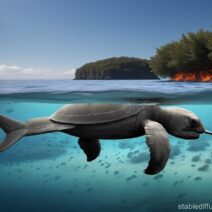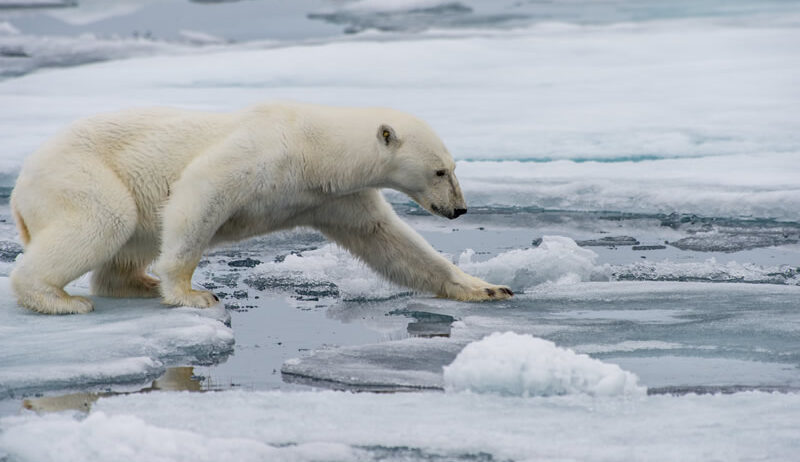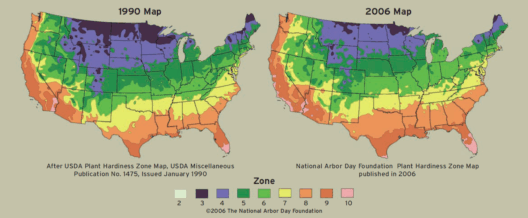As we delve into the intricate relationship between polar bears and global warming, it becomes evident that these majestic creatures are emblematic of broader climate change issues. Polar bears (Ursus maritimus), the apex predators of the Arctic, rely heavily on sea ice for their survival. This habitat provides essential hunting grounds for seals, their primary prey. However, the relentless rise in global temperatures is precipitating a catastrophic reduction in sea ice, subsequently jeopardizing the survival of these formidable animals. The situation is dire and multifaceted, with several critical aspects to consider.
Firstly, we must examine the phenomenon of sea ice loss. Over the past several decades, Arctic temperatures have increased at more than twice the global average rate. As global warming progresses, we witness an alarming decline in sea ice extent and thickness. This occurs primarily during the summer months, where melting continues to accelerate. The reduction in sea ice diminishes the surface area available for hunting, forcing polar bears to travel further and expend considerable energy to find adequate food sources.
In a landscape where sea ice is continuously retreating, polar bears face the grim reality of longer fasting periods. As sea ice diminishes earlier in the spring and forms later in the autumn, bears are often left stranded on land during crucial hunting seasons. Their ability to gain sufficient fat reserves for the breeding season is severely compromised. This nutritional deficit directly impacts their reproductive success rates, leading to decreased cub survival and smaller litter sizes. The absence of adequate hunting opportunities signals an unsettling trend toward a diminishing polar bear population.
Beyond the immediate implications of reduced hunting grounds, polar bears are also experiencing shifts in behavioral patterns. With the absence of stable sea ice, these resilient mammals are found roaming extended distances, often leading to increased human-animal conflicts. Encroachment into human settlements, driven by hunger and desperation, raises safety concerns for both bears and humans alike. This displacement ignites a complex web of challenges, such as the potential for conflicts that can result in lethal outcomes for polar bears.
Furthermore, the melting Arctic ice is not merely a local crisis; it has profound global ramifications. The Arctic plays a pivotal role in regulating the Earth’s climate. The loss of reflective sea ice means that more solar energy is absorbed by the ocean, exacerbating global warming further. This creates a feedback loop, where rising temperatures lead to reduced ice and vice versa. The cascading effects of this phenomenon have implications that extend far beyond the Arctic region, creating a holistically interconnected climate crisis.
Moreover, we must consider the biochemical changes occurring within polar bear habitats as a consequence of climate change. The melting ice exposes previously frozen permafrost, releasing greenhouse gases such as methane and carbon dioxide back into the atmosphere. This release further accelerates global warming. The stark reality is that the very habitat polar bears depend on is undergoing radical transformations, which could render it inhospitable for subsequent generations of bears.
In addition to shifting ecological dynamics, the health of polar bears is also at stake. Increased stress due to food scarcity and habitat disruption can lead to a myriad of health issues. For instance, bears may experience higher rates of disease and compromised immune responses. The associated stress hormones can cripple their ability to forage efficiently or reproduce, further amplifying the existential threats posed by climate change.
Another critical factor to consider is the polar bears’ unique adaptations to their environment. They have evolved a thick layer of blubber and dense fur to withstand frigid temperatures. However, as the climate warms, polar bears are becoming increasingly vulnerable to heat stress. They are not well adapted to high temperatures, which can interfere with their metabolic functions and exacerbate dehydration issues. In some instances, this leads to altered feeding behavior and a further decline in health.
In light of these threats, the plight of polar bears serves as an urgent call to action. Conservation efforts must be prioritized to address the multifaceted challenges they face due to climate change. This involves not only habitat preservation but also comprehensive climate policies aimed at mitigating global warming. Effective strategies could include the reduction of greenhouse gas emissions, increased investments in renewable energy, and fostering a sustainable relationship with nature.
Additionally, public awareness and education campaigns are paramount. By informing society about the plight of these iconic animals and the conditions exacerbated by climate change, we can foster a collective sense of responsibility. Engaging communities in conservation initiatives can create a ripple effect, mobilizing grassroots movements dedicated to preserving the tenuous balance of Arctic ecosystems.
In conclusion, the future of polar bears is intricately linked to the actions we undertake today to combat climate change. As stewards of the planet, we bear a responsibility not only to safeguard polar bears but to promote the health of all ecosystems affected by our climate crisis. The narrative we collectively write today will dictate whether these remarkable creatures continue to thrive or face an uncertain future in a warming world.








